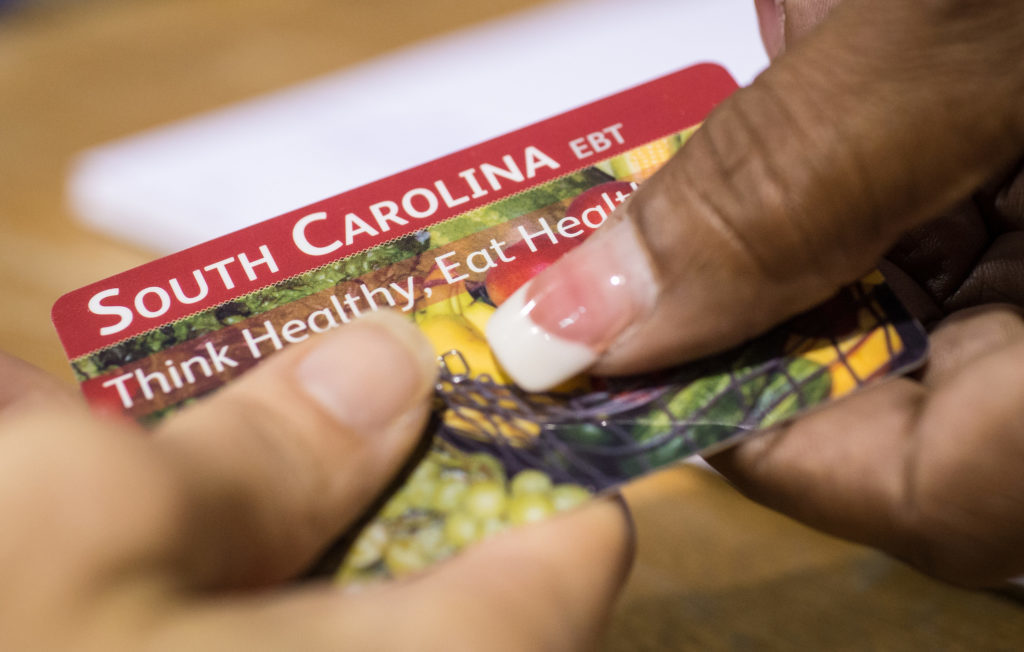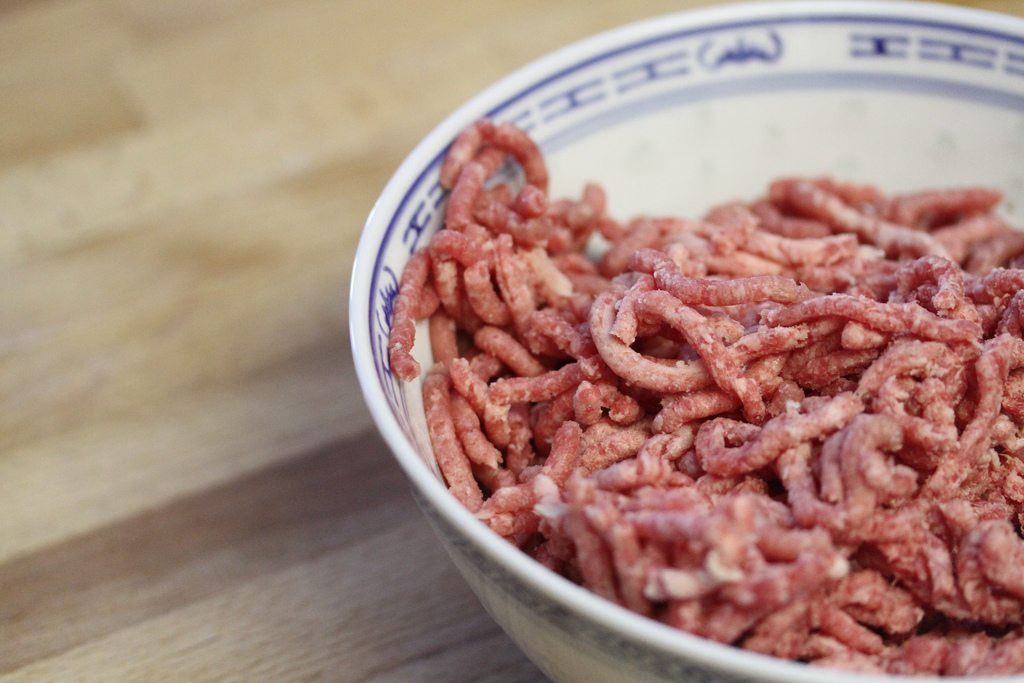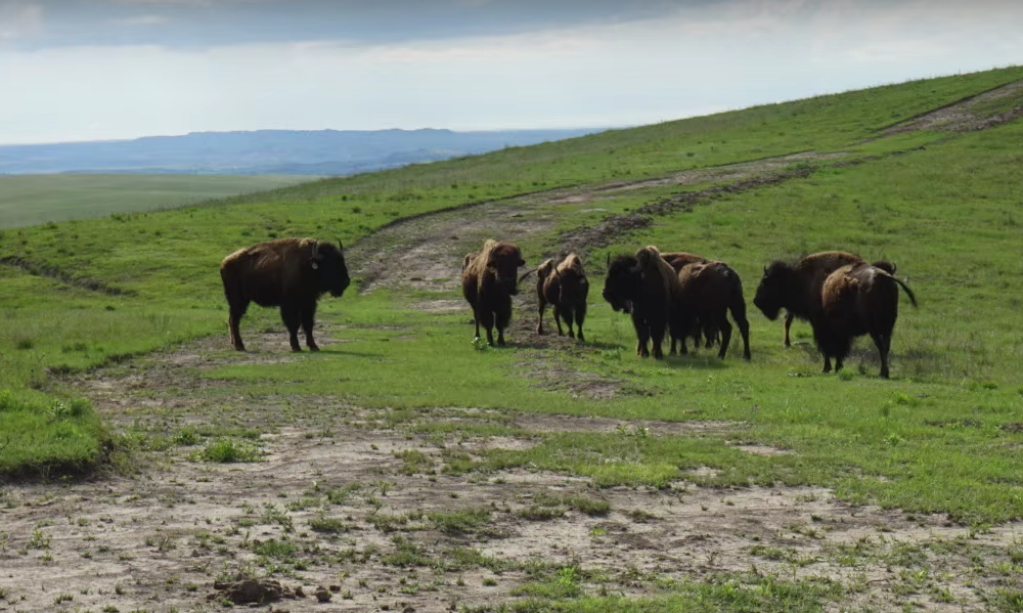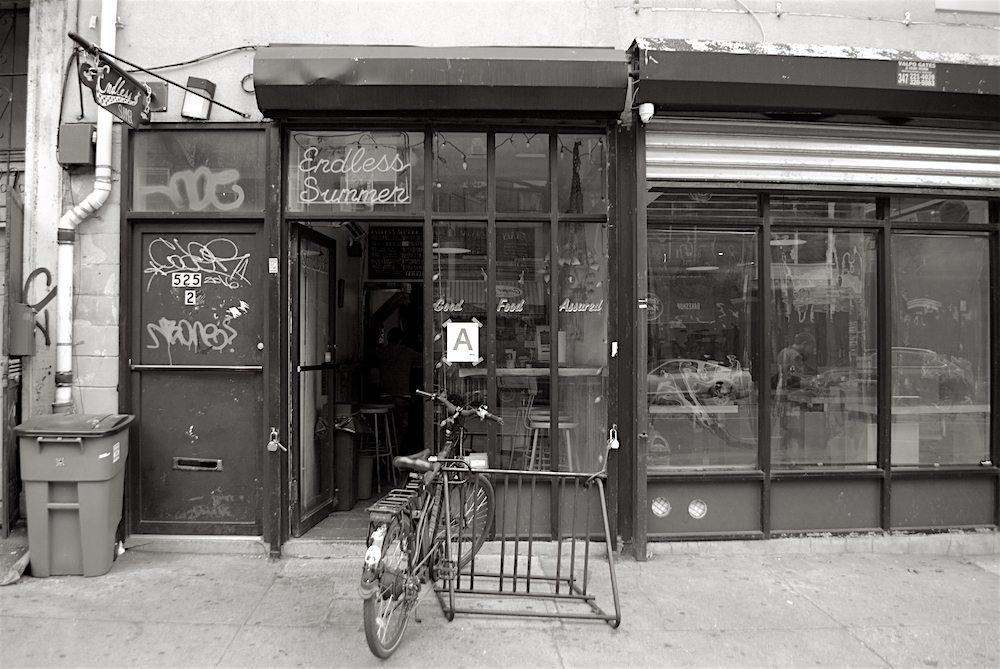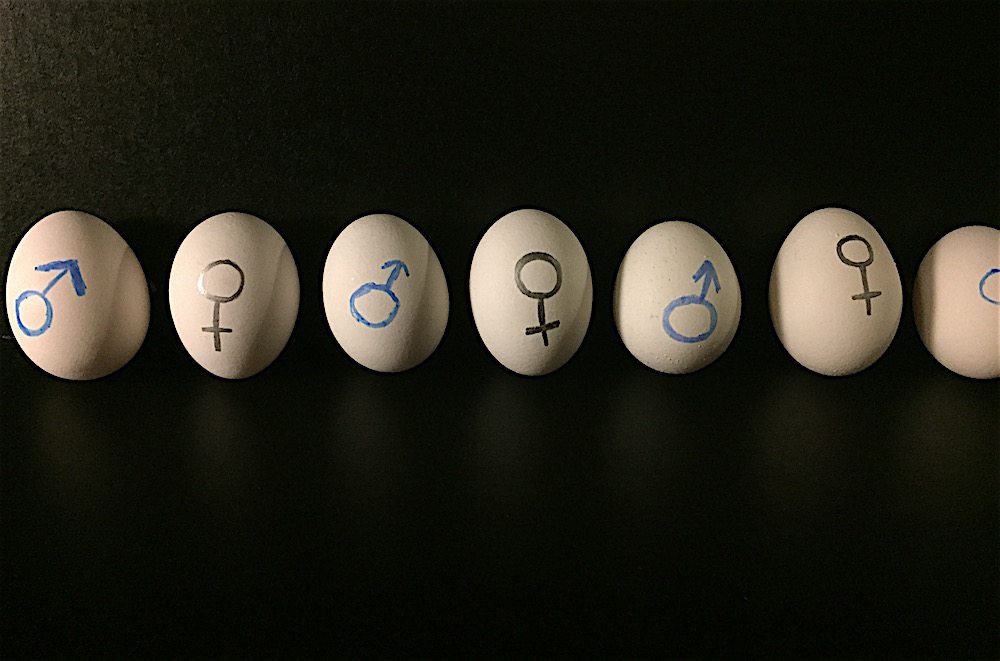
Joe Fassler
For years, the egg industry has sought a holy grail solution to a vexing problem: what to do with male chicks. The Food and Agriculture Organization of the UN (FAO) estimates there are more than 6 billion commercial laying hens worldwide, all of which (of course) are female. But roughly as many males are born as hens—and they’re considered useless, since they can’t lay eggs. What to do with several billion baby roosters?
The standard industry solution, at least for now, has been to cull them en masse. If you’ve never heard of “chick culling,” it’s exactly what it sounds like: new male chicks are typically euthanized within hours of their birth. Some hatcheries suffocate their day-old males with carbon dioxide, a process that takes so long most consider it impractical and inhumane. But more commonly, chicks are carried by conveyor belt into an industrial grinder–a process called “maceration.” It’s not pretty, but animal welfare experts approve. Death, supposedly, is instantaneous.
Everyone hates chick culling. For the hatcheries that supply farmers with new hens, it’s a dirty, troubling job that’s also wasteful and inefficient. Ethics aside, it means destroying creatures they’ve spent resources to fertilize, incubate, and hatch. It means hiring “sexers,” who typically check gender by hand, squeezing feces from new chick’s anal cavity to check for a bump-shaped gland. (A professional sexer sorts an estimated 800 to 1200 chicks an hour.) And it means generating tons of fluffy waste, which is typically hauled off to the landfill on the hatchery’s dime. The industry knows it’s bad optics, too. Animal welfare experts have railed against chick culling for years, and though the public hasn’t really caught on, egg producers know it’s a serious vulnerability. At a time when consumer concern about the welfare of animals raised for food is higher than ever, their next PR disaster is only a viral video away.
Here’s where things could get interesting: in May, Dutch biotech startup In Ovo announced a new method of determining a chick’s gender before it hatches. Researchers bore a hole in the top of the shell with a tiny needle, then use mass spectrometry to test for a gender-linked chemical marker that, according to co-founder Wouter Bruins, helps determine sex with 95% accuracy. This method allows producers to abort the male embryos on day nine of incubation (which, according to one 2013 study, is before pain perception develops), making the culling of live chicks unnecessary.
Determining a chick’s sex in-shell, a process known as “in-ovo sexing,” is not a brand new idea. Others have tried before, and others are trying now. What is new is the speed and effectiveness of In Ovo’s process. In 2010, The Economist reported on an American company that had achieved results within two hours. It was a promising start, but took far too long to be commercially viable. Bruins says In Ovo gets results in about four seconds, and he thinks his researchers can shave it down to one.
But In Ovo has a ways to go before hatcheries are actually using its technology. Right now, it’s still testing eggs by hand in the lab. For the past two years, the company has been working with Sanovo Technology Group, a Danish machine manufacturer, to develop equipment that can integrate with existing hatchery assembly lines.
“In total we need about a year to interface it all, to actually get the first sorting device ready to put in a hatchery,” Bruins says. “But then it will take about a half year longer to get all the problems out, because we’ll probably run into a lot of problems.”
Still, if Bruins is right, that means we’re less than two years away from a technology with the power to upend the egg industry. Last month, in a sign that a paradigm shift is imminent, United Egg Producers—a farmer cooperative that produces 95% of the eggs in the United States—promised to eliminate chick culling from its supply chain by 2020, or “as soon as is commercially available and economically feasible.”
“There has essentially been a proof of concept for the past two years but never been able to be scaled up for millions and millions of eggs,” says David Coman-Hindy, executive director of the Humane League, an animal welfare group which helped broker the UEP agreement. “But in the last few months, especially, we’ve really seen the development of this tech accelerate. It’s clear that it will be commercially viable and these massive hatcheries will be able to roll it out.”
By now you might be wondering if all this is really necessary. Do we really need cutting-edge technology to do this? Surely there’s some way to find a market for these male chicks. Could these birds really be so worthless that it’s better they not be born?
White Leghorns are some of the most common layer hens. One hatchery website describes them as “high strung,” one reason they’re usually kept in battery cages
Matt O’Hayer, founder of Vital Farms, an Austin-based “pasture-raised” egg company, has put a considerable amount of thought, effort, and resources into answering that very question. He says he’s spent years (not to mention hundreds of thousands of dollars) looking for a way to avoid the chick culling problem. His conclusion:
“No one of any scale at all has a solution to male chicks other than in-ovo sexing.”
Like many Americans, O’Hayer was unaware of the culling practice at first—and when he found out, after about a year in business, he was disturbed. His first step was to contact the hatchery where he bought his laying hens, hoping they could work together to find a home for the male chicks they were culling. The hatchery’s proposed solution: why not send them as donations to impoverished countries?
So O’Hayer and his wife Catherine Stewart, Vital’s co-founder, travelled to Costa Rica, looking for a buyer. Donating the male chicks to a poverty-stricken part of the world would seem a perfect win-win solution. But O’Hayer wasn’t able to give them away, even with help from the Peace Corps and the Whole Planet Foundation, Whole Foods’ international NGO.
The problem is rooted in the genetics of modern laying hens, which have been bred to meet the needs of industrial-scale egg production. Meat chickens—broilers—have been souped up to gain weight rapidly, providing the juicy white-meat cuts American consumers demand. But layers are just the opposite. Since extra weight detracts from egg production, leaner is deemed better, and those birds take longer to grow. Aid organizations can’t justify providing hungry people with layer-type chicks, which take much longer than broilers to reach full weight—and once they do, are still slighter of frame.

The White Leghorn, the egg industry’s ubiquitous layer, is a lean bird capable of producing around 325 eggs a year, almost one per day—the kind of prolific output the industry now demands. To put that into context, hens in 1960 laid just 150 eggs a year.
But the males have zero value—there’s not enough flesh on their bones, especially for Americans raised on ample modern day chicken breasts. As O’Hayer puts it: “They don’t put on any meat at all to speak of—they’re scrawny little things.”
But what about heritage breeds, the hens that haven’t been tweaked by years of intensive human tinkering? Those hens do exist—they’re usually called “dual purpose,” because they can be raised for meat or eggs. They’re mostly the domain of small farms and backyard hobbyists. It doesn’t appear that anyone is using dual purpose birds in large-scale egg production. Dual purpose birds lay fewer eggs, about 250 per year on the high end, and O’Hayer says the decline makes for financially unworkable numbers.
“For a commercially viable product, a farmer [might] break even at 275 eggs per year,” O’Hayer explains. “So you can feed that bird all you want, but why would you raise a laying hen for eggs that’s only gonna give you 250 eggs a year–and you start making a profit at 275–when you could raise a hybrid and you start making a profit on those last 50 eggs?”
Maybe they’re not commercial-grade egg layers, but there’s some evidence that dual purpose birds have an advantage: they allow smaller, specialty hatcheries to cut down on culling. Since these birds work for meat and eggs, hatcheries often sell chicks in “straight runs”—meaning they’re not separated by gender at birth, so any order ends up being about 50 percent males. The idea is that specialty farmers and backyard hobbyists can raise the hens for eggs and slaughter the roosters for meat.

In practice, this sometimes means passing the culling buck: the male chicks end up being the customer’s problem. They want to raise birds for eggs, and end up with noisy roosters they don’t want to house and feed. Not surprisingly, male chickens are increasingly turning up abandoned at animal shelters.
Still, some small hatcheries have found ways to sell males to people who really want them. In Lebanon, Missouri, Cackle Hatchery is able to sell most of its males via straight runs and all-male specials, according to Karen Albright, who has been an employee for almost 30 years. The customers are a mix of people looking for chicks at a lower price and ethnic groups that seek out less heavy meat birds. For example, Albright says that members of the Hmong religious community in the Twin Cities frequently buy males of the egg-laying breeds; for other ethnic communities not raised on the big-breasted industrial chicken, these males are acceptable—even desirable—for their meat.
For hatcheries like Cackle, culling is less of a problem—even if it still presents a challenge. But, assuming In Ovo’s technology works out as planned, the little guys are going to get left behind. The technology will likely be implemented by the biggest operations, at least at first, since they’re the ones who can afford the most tech-intensive, automated systems. And Bruins says In Ovo’s sights are set on those very operations to start. It’s both the way to make the most money and have the biggest impact.
In the meantime, Richard Blatchford, a poultry scientist at UC Davis, predicts that culling “will continue at these smaller scale hatcheries before [the new] technology can be adopted across the board.”
There’s an irony in this, of course. In-shell sexing is already being touted as the next horizon of humane animal treatment, but it may also have the unintended effect of making us even more reliant on industrial agriculture.
Hybrid breeds like the Rhode Island Red are popular with backyard farmers, but the hens don’t produce enough eggs to compete with White Leghorns
The hatcheries using In Ovo will be able to cut costs–vaccinating and hatching half as many chicks, for example—adding up to big savings when spread over tens of millions of birds. More significantly, they’ll be able to claim the ethical high ground, helping United Egg Producers and other mega companies make “no cull” corporate commitments.
That’s why In Ovo’s innovation presents us with a strange moral choice. The hatcheries supplying the world’s largest egg producers won’t be culling, while the ones selling heritage breeds to smaller farms probably still will be. What will happen when Wal-Mart sells “no-cull” eggs you can’t find at the farmer’s market? Maybe the smaller hatcheries will invest in the high-volume equipment In Ovo plans to interface with—moving closer to the scaled-up, highly automated model. Or maybe they’ll just go out of business.
The hatchery industry is already highly consolidated, and in-ovo sexing will be the latest thing squeezing smaller players. Not killing day-old chicks is obviously the better choice. But it may also mean favoring agriculture on the very largest scale, and everything that comes with it.




